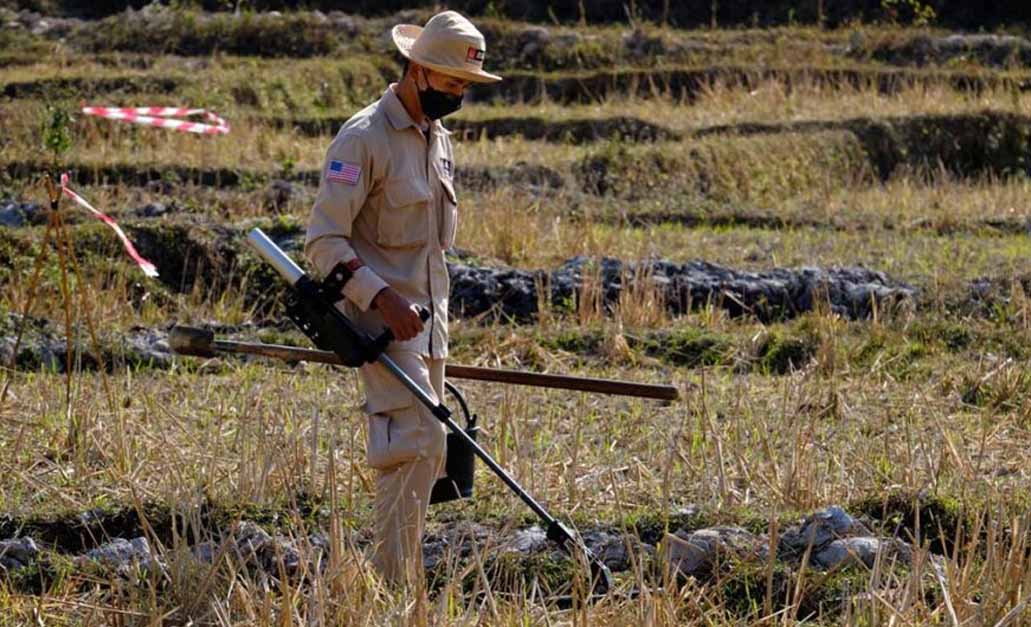A young mother of five, Joy Saenkham, was killed by an unexploded ordinance (UXO) as a result of domestic farming in her vegetable plot in Kokmuang village, Toumlan district, Salavanh Province.
While digging for a vegetable bed after feeding pigs, Joy struck an underground UXO, leading to a fatal explosion that killed her instantly. Her son, who was sitting 10 meters away, remained unharmed, according to the local Office of Information, Culture and Tourism in Toumlan district.
The UXO was later identified as a single bomblet from a cluster munition, most commonly known in Laos as “bombee’s.”
Following the tragic death of Joy, the Administrative Office of Salavanh Province led a delegation to donate LAK 18 million (USD 868) to the family of the deceased. The son was also taken to the hospital for health checkups and was later found to be in healthy condition.
Joy’s death continues to mark the strenuous weight of the “secret war” on the people of Laos, especially those in rural areas.
Between 14 December 1964 and 29 March 1973, the US Air Force 2nd Air Division and US Navy Task Force 77 conducted Operation Barrel Roll. During that time, over 270 million cluster bombs were dropped on Laos, but up to 80 million did not detonate, leaving a legacy of ongoing deadly explosions.
From 1996 until February this year, around 1,808,254 UXO’s have been located and detonated from 79,599 hectares of land, allowing for agricultural use and the development of such plots. As for mine risk education, people in 4,092 villages were made aware of the dangers and cautions.
Despite the Lao government and NGOs efforts to address the obstacle of UXO restricting rural development, it continues to cast a looming shadow of uncertainty and vulnerability over the lives of rural people.



